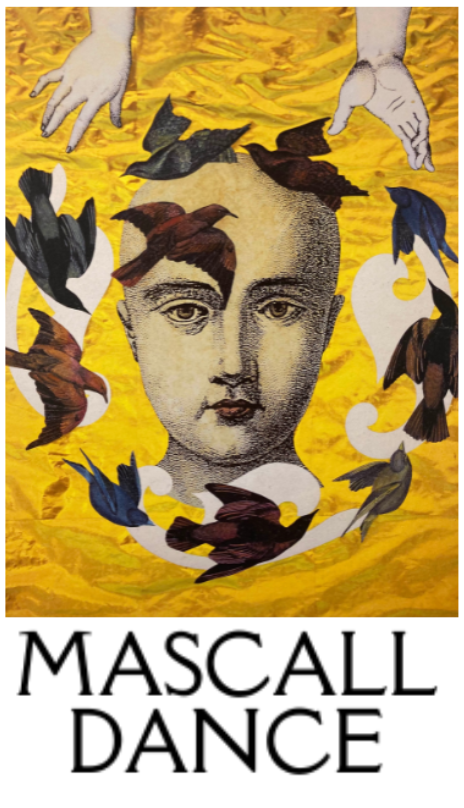Sans Façon: Reflections on Public Art and the Environment
by Andrea Valentine-Lewis, WET Contributor
The Impossible has Already Happened | Mascall Dance
WET subscriber Ann Gray-Elton April responded to our April 2021 interview with Melina Scholefield on the City of Vancouver’s “Rain City Strategy.”
Ann recommended that we take a look at Dale Hodges Park in Calgary, a project that manages stormwater through artistic strategies.
Turns out, that park is designed by Charles Blanc and Tristan Surtees who make up Sans Façon, a Calgary-based art practice that combines landscape architecture and public art.
They advocate for artistic approaches that merge or fuse seamlessly with the environment (both natural and urban), so that public art is not merely decorative, but rather an extension of its surroundings. They also make projects that are not contextualized through signage or didactic text in the hope that the viewer will make meaning from the work based on their own lived experience.
My interview with the duo last month, in which we discussed all things public art, led me to reflect on my own preconceived impressions of the genre, which now seemed superficial and rather empty. The exchange with Charles and Tristan led me to reconsider the way that I consider all artistic practices.
Tristan Surtees (left) and Charles Blanc (right) of Sans Façon. Photo: Erin Brooke Burns
Charles and Tristan met in Glasgow, Scotland, where Tristan was studying environmental art and Charles was pursuing architecture. The name Sans Façon actually means “without any unnecessary social ceremony.” The simplest translation (albeit a bit reductive) would be “no fuss.”
Their practice works across many mediums simultaneously and has been presented not only in the public realm but also within art galleries and museums.
Watershed+, a public art program they devised for the City’s water department, brought the duo to Calgary in 2011. This program was unique insofar as artists worked alongside Calgary’s Water Department and other municipal departments. The program approached Calgary’s watershed issues; Surtees and Blanc spent a year working closely with a social geographer, graphic designer, another artist and architect, and a water engineer, focussing on the utility of both sanitary stormwater and drinking water to develop this program. As part of being lead artists for Watershed+, they were commissioned to lead the conceptual design for Dale Hodges Park.
Dale Hodges Park. Photo: Courtesy of Wilco Contractors Southwest
The images of the park are spectacular. They demonstrate this effortless fusion of artistic strategy and functionality.
Sans Façon stresses that the only reason this dynamic result was reached was that the artists, the members of Calgary’s municipality, and the design team worked closely together and mutually respected each other’s specific expertise.
I was surprised to hear just how much City workers valued the artists’ perspectives on all issues, not just issues around aesthetics.
Dale Hodges Park. Photo: Courtesy of Sans Façon.
Their collaborative approach is inspired by The Artist Placement Group (APG) – Barbara Steveni and John Latham from the United Kingdom – who founded their project in 1966 based on the notion that artists should be better integrated into society and not cast off as those responsible for entertaining or dazzling the public.
Sans Façon leads by example and demonstrates their dedication to these principles with every project they undertake. In relation to the public’s reaction to public art, Tristan believes that art should be left open-ended for subjective interpretation.
“I think the strongest, strongest works of art are really those that invite you to look at something in a different way or invite you to question something. And you come to your own realization, rather than defining what that thing is or how you should be, how you should look at it.
Tristan Surtees | Sans Façon
Dale Hodges Park. Photo: Courtesy of Wilco Contractors Southwest
Opposing the “visual noise” of many public art initiatives (for example, decorating bus shelters with seemingly unrelated visual content), Sans Façon considers emotional connection and relationship to place.
Another example of San Façons integrative and immersive public artworks was commissioned for the City of Calgary. The duo designed a series of fire hydrant drinking fountains to be installed around the city during festival times and other occasions that may draw a crowd.
They titled one of the fountains Family (below) because, due to the way it was constructed, it would encourage a communal drinking experience with folx around you. Like most of their works that avoid contextualization, the fountains were installed without accompanying signage or information to encourage a subjective and unmediated experience of the work.
“Family” Dale Hodges Park. Photo: Courtesy of Sans Façon.
In all, Sans Façon brought me to consider the role of the artist in society. I was touched by the notion that Calgary’s municipal residents not only valued the artists’ ideas but integrated them into their plans at Dale Hodges Park. Rather than public art existing on the periphery of the community, perhaps cities should liaise with artists in planning and building public structures like streets, sidewalks, sewer, and sanitary systems, to facilitate deeper and embedded connections between the public and public art.
Republished September 2021.





